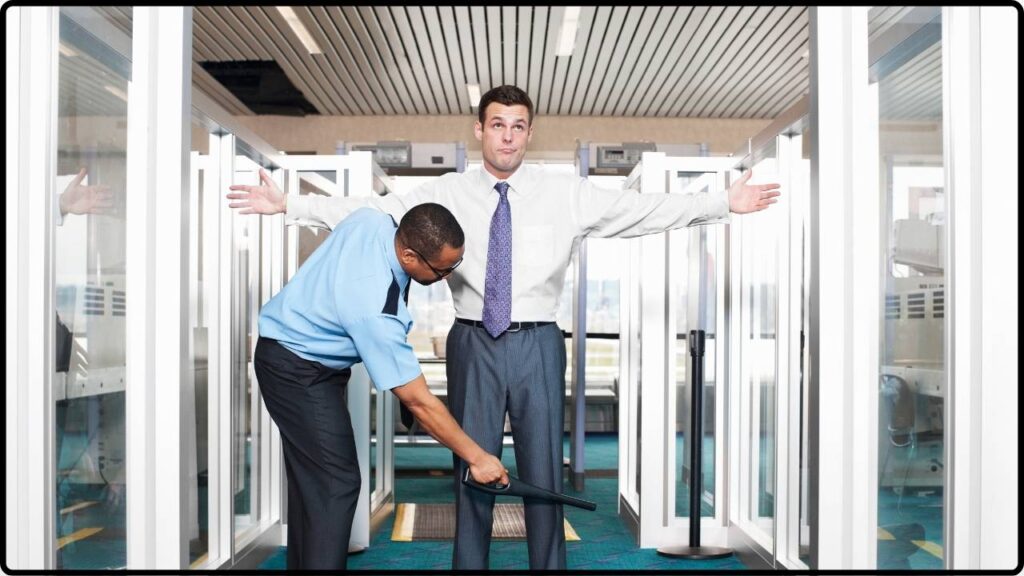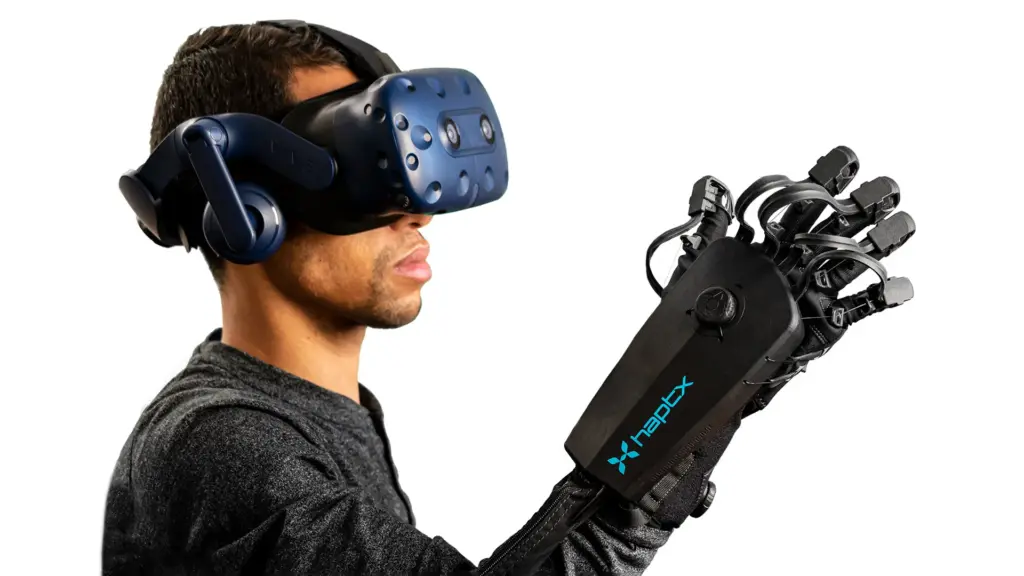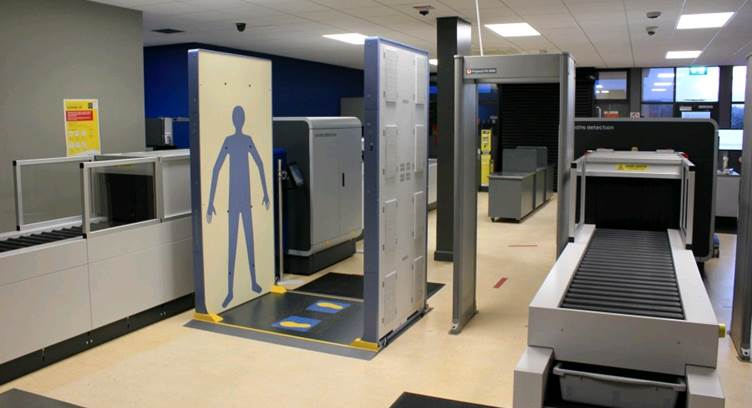TSA’s New Virtual Pat-Down Changes Everything: In an exciting move towards improving airport security while maintaining passenger privacy, the Transportation Security Administration (TSA) is rolling out a new technology that could drastically reduce the need for uncomfortable physical pat-downs. This innovation, known as the Wearable Sensor for Contactless Physical Assessment (WSCPA), aims to modernize the way TSA agents detect concealed items, using cutting-edge tools like virtual reality (VR) headsets, touchless sensors, and haptic gloves. No more awkward, physical body searches — this could change everything. In this article, we’ll break down the details of TSA’s virtual pat-down technology, how it works, and why it’s a game-changer for passengers and security professionals alike. We’ll also provide insights into how this technology will make airport security faster, safer, and more comfortable for everyone, while keeping the necessary high standards of safety.
TSA’s New Virtual Pat-Down Changes Everything
The TSA’s new virtual pat-down technology represents a major leap forward in airport security. By using advanced sensors and VR technology, it promises to make airport security checks more efficient, comfortable, and private for all passengers. While this innovation is still in development, it shows great potential to transform the passenger experience. Whether you’re a frequent flyer or just an occasional traveler, this technology could help make your airport experience faster and less stressful in the near future. Keep an eye out for it at your local airport — it’s coming soon!

| Key Feature | Details |
|---|---|
| Technology Involved | Wearable VR headsets, haptic feedback gloves, LiDAR, and millimeter wave scanning. |
| Benefits | Faster screening, enhanced privacy, improved safety, accessibility for all passengers. |
| Current Status | In prototype phase; TSA actively seeking commercial partners to advance the technology. |
| Official Website | TSA.gov |
What is TSA’s New Virtual Pat-Down Technology?
The TSA is exploring a cutting-edge wearable sensor system that allows agents to “feel” beneath a passenger’s clothing — virtually. This is done without any physical touch. Sounds like something out of a sci-fi movie, but it’s real, and it’s happening now.
Known as the Wearable Sensor for Contactless Physical Assessment (WSCPA), this new technology utilizes a combination of millimeter wave scanning, LiDAR, backscatter X-ray, and 3D body mapping to identify concealed items that could pose a security threat. These sensors create a detailed, 3D map of a passenger’s body. The data is sent to a VR headset worn by TSA agents, who can then “virtually” pat down the passenger by using haptic gloves. These gloves simulate the feeling of touch, allowing the agents to detect hidden items in real time.
How TSA’s New Virtual Pat-Down Work?
Imagine walking through the security checkpoint and being scanned by a series of high-tech sensors. These sensors create a digital version of your body, with all items (like electronics, sharp objects, or liquids) mapped in great detail. The system then sends this data to TSA agents wearing VR headsets.
With the haptic gloves on, the agents can feel the contours of any hidden items. If they detect something suspicious, the system alerts them instantly. The beauty of the system is that the agent never physically touches you — it’s all virtual.
Let’s break it down step-by-step:
- Scanning: Passengers walk through a scanning machine, which uses a combination of LiDAR (Light Detection and Ranging) and millimeter-wave scanning to map the body.
- Data Mapping: This data creates a 3D model of the person’s body and any objects they may be concealing.
- Virtual Pat-Down: TSA agents, wearing VR headsets, can see this model and use haptic gloves to feel the virtual body, identifying any hidden items.
- Identification and Action: If the system detects a potential threat, TSA agents can take further action, such as a manual inspection or an alert.

Why This Technology Matters?
Let’s talk about why this new technology is so significant. Traditional pat-downs can be uncomfortable, awkward, and invasive. They often cause anxiety for passengers, and let’s be honest — no one wants to be touched by a stranger in an airport. The new system allows passengers to maintain privacy, making the process feel less intrusive while still ensuring that security checks are thorough.
Enhanced Privacy
With the virtual pat-down, passengers don’t need to worry about being physically touched by TSA agents. The technology ensures that the same level of safety is maintained, but without the discomfort of a manual search. This can be especially important for individuals who are sensitive to touch or feel uncomfortable during physical screenings.
Example: Consider a frequent traveler who is on the go for business meetings or family vacations. They’re already stressed about missing their flight or dealing with flight delays. Adding a physical pat-down to the mix only increases that stress. With virtual pat-downs, they’ll still get through security without feeling the awkwardness of a personal search. For many people, that’s a welcome change.
Increased Efficiency
This virtual system speeds up the entire screening process. Instead of waiting for a TSA agent to perform a lengthy physical search, the virtual pat-down can detect hidden items almost instantaneously. This means less waiting in line and faster security checks for everyone.
Practical Insight: With millions of passengers flying every day, even a small reduction in wait times can lead to significant improvements in the overall airport experience. Imagine a situation where you no longer have to stand in line while someone ahead of you goes through an extensive search process. With the new technology, your experience is faster and less frustrating.
Improved Safety
By reducing direct contact between passengers and TSA agents, the technology minimizes the risk of transmitting germs and contagions. This is particularly important in a post-pandemic world, where maintaining health and hygiene is paramount.
During the COVID-19 pandemic, many travelers were reluctant to engage in close contact with TSA agents, and airports were forced to implement strict health protocols. The virtual pat-down eliminates this issue, keeping both passengers and TSA agents safe from physical contact, all while maintaining a high level of security.
Accessibility
For individuals with visual impairments, the use of haptic feedback gloves can offer an accessible screening experience. These gloves can simulate touch, allowing agents to “feel” the contours of a person’s body and any hidden items.
For example: A visually impaired traveler who has never felt comfortable undergoing a traditional pat-down can now benefit from the virtual system. TSA agents will use haptic feedback to identify any hidden objects, making the experience smoother for passengers with specific needs.

Challenges and Limitations of the Technology
While the potential for virtual pat-downs is immense, there are a few challenges and limitations that TSA will need to address before widespread implementation:
- Technology Development: The technology is still in the early stages, and while progress is being made, it’s not yet perfect. The accuracy of the sensors and haptic feedback must be fine-tuned to ensure thorough detection. As with all new technologies, it will take time to ensure that the system can catch every potential threat without fail.
- Privacy Concerns: Although the system is designed to preserve privacy, some passengers may still feel uneasy about the use of body-scanning technologies. There will be a need for clear guidelines on data storage and handling to reassure passengers. Public trust will play a crucial role in the adoption of this technology, and TSA must ensure that passengers’ data is secure and not misused.
- Cost of Implementation: The high-tech equipment required for virtual pat-downs may come with a significant cost, making it a challenge for smaller airports to adopt the technology right away. Initially, larger airports with more resources might see the system implemented, but smaller airports may need additional time and investment to roll out the technology.
- Reliability: Like all new technologies, there may be bugs and unforeseen issues that could disrupt the flow of the screening process until the technology is fully refined. For instance, the sensors might occasionally have difficulty identifying certain materials or objects, leading to delays or false alarms.
Public Reception of the New Technology
While the virtual pat-down system has its share of supporters, it’s not without criticism. Many travelers are excited about the privacy and comfort it offers. They appreciate that the technology eliminates the often-awkward moments that come with a traditional pat-down.
However, privacy advocates have raised concerns over the use of 3D body scanning. Some people worry that scanning their body for hidden objects might be an invasion of their privacy, especially if the data collected is not handled correctly. The TSA will need to ensure that passengers’ personal data is protected and that these scans are used solely for security purposes.
On the other hand, security professionals have welcomed the idea. They believe it could help streamline the screening process, allowing TSA agents to focus on more pressing issues rather than spending time conducting manual searches. Law enforcement agencies are also interested in the potential to detect dangerous items quickly and accurately, reducing the risks of smuggling or weaponization in public areas.

Comparisons to Traditional Methods
Traditional pat-downs involve physical contact between TSA agents and passengers, which can sometimes be invasive and uncomfortable. With virtual pat-downs, this interaction is replaced by a series of advanced sensors and virtual feedback, creating a less intrusive experience while still upholding the standards of airport security.
Traditional Pat-Downs:
- Physical touch required.
- Can be uncomfortable and awkward.
- More time-consuming for both passengers and agents.
- Higher potential for errors or misunderstandings during the search.
Virtual Pat-Downs:
- No physical contact.
- Increased privacy for passengers.
- Faster and more accurate.
- Reduced risk of health concerns through touchless technology.
How Travelers Can Prepare?
Even though this technology is still being tested, it’s important to prepare for any changes that might happen in the future:
- Be Prepared for Additional Scanning: As virtual pat-downs are implemented, you may be asked to walk through new scanning machines. These machines will be non-invasive but will map your body in detail. Travelers should be aware of these advancements and be ready for a smoother, faster experience.
- Stay Informed: Watch for updates from the TSA and other security agencies on new screening procedures. These updates can typically be found on the TSA website or social media channels, keeping passengers informed about any changes in procedures and what to expect.
- Expect Faster Screenings: With the new system in place, security checkpoints might be quicker, but always arrive early to allow for any unforeseen delays. Keep in mind that new technologies can take time to roll out completely, so initial phases might require a little more time for adjustment.
- Be Patient with Staff: While the technology is being tested and implemented, remember that TSA staff may still be learning the ins and outs of the new system. If you’re among the first to use it, show some understanding as they refine the process.
Skip the Paperwork: How Some U.S. Travelers Are Going Global Without Extra Visas
TSA’s 3-1-1 Rule Explained: What You Need to Know Before Your Next Flight Abroad
Goodbye Passports? Apple’s New Digital ID in iPhone Wallet Is Changing Global Travel Forever











